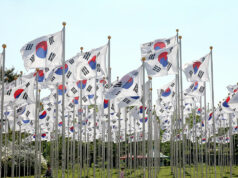Designer Pitoy Moreno, 88
COUTURIER Jose “Pitoy” Moreno died on Jan. 15 after a long battle with Alzheimer’s disease, leaving a legacy of beautiful women dressed in his clothes will remain etched in the collective memory.
Some of his most famous clients include former first lady Imelda Marcos, the late president Corazon Aquino, and former president Gloria Macapagal Arroyo, whom he has dressed since she was a little girl in Malacañang: as he had dressed her mother, former first lady Eva Macapagal, and a host of most of the former first ladies before, and then, after her.
Mr. Moreno, in his heyday in the 1960s, ’70s, and well beyond, dressed Manila’s elite, with one of his favorite muses being Imelda Ongsiako Cojuangco. State visits to the Philippines and the like also allowed Mr. Moreno to dress visiting dignitaries and their families, including Princess Margaret of the United Kingdom, former American first ladies Pat Nixon, Betty Ford, and Nancy Reagan, and prima ballerina Margot Fonteyn.
Born and raised in Gagalangin, Tondo, Manila in 1930, Mr. Moreno studied Fine Arts in the University of the Philippines, where many of his classmates went on to become mainstays of the country’s political and social life — including Celia Diaz Laurel, Araceli Limcaco Dans, and restaurateur Nora Daza. He was also a member of the Upsilon Sigma Phi fraternity, which proved to be another useful social link as fellow members included such luminaries as Ferdinand E. Marcos, Salvador H. Laurel, and Benigno S. Aquino.
His designs made their mark on the world stage when former first lady Imelda Marcos and her coterie of Blue Ladies wore his designs — most notably his modernized Filipiniana, exemplified in the terno — showed the world the aesthetic and beauty of the Filipina. While the evolution of the Maria Clara to the terno had begun long before he started working with the butterfly sleeves — notably in the modernizing and simplifying work of Slim Higgins, Pacita Longos, and Ramon Valera — his partnership with Mrs. Marcos showed the world the beauty and quality of Filipino textiles.
Mr. Moreno also wrote a book about Filipino weddings called Kasalan, and Philippine Costume, which focused on traditional Filipiniana.
Mr. Moreno’s career might prove the adage that “Style is forever” considering that his former clients from the Marcos regime have risen and fallen again and again, and yet Mr. Moreno sewed on through every administration since. His efforts were recognize by the Arroyo administration in 2009 when he was hailed as a National Artist of the Philippines for Fashion Design — an honor that was contested by other National Artists who said Fashion Design was not an accepted art form and his craft was simply dressmaking. The Supreme Court issued a temporary restraining order on the conferment of the award to Moreno and six others, which remains to this day.
With Mr. Moreno’s passing, he joins a pantheon of Filipino designers who enabled the evolution of Filipina formal dress, adapting the once-fussy outfit into something practical and beautiful, and adapting to the current needs of the modern woman. His talent and bravado also encouraged young designers to continue to change and innovate those iconic butterfly-sleeved dresses, every stitch changing with the times.
He is survived by his sister, the poet Virginia Moreno, and nephews and nieces. — Joseph L. Garcia



